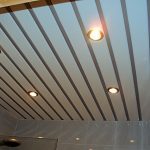Content
- 1 Advantages and disadvantages of technology
-
2 Facade plastering sequence
- 2.1 Surface preparation
- 2.2 Tools and materials
- 2.3 Beacon Installation
- 2.4 Types of decorative plaster
- 2.5 Splashing
- 2.6 Application of the main layer
- 2.7 Grout
- 3 Video
- 4 Photo of facades with decorative plaster applied
Maintaining the foundation of the house in excellent condition has the most positive effect on the condition of building structures. The effectiveness of insulation, high-quality thermal insulation, and the proper operation of all communications depend on this. One of the most durable external coatings is natural stone and decorative plaster, with the help of which you can plaster the facade with high quality, giving it an attractive appearance.
Practical material has a lot of varieties, advantages, in addition, all the work on plastering walls is considered quite simple. This process belongs to the middle price category, but at the same time it has excellent fire-resistant and waterproof properties.
Advantages and disadvantages of technology
Plastering is necessary to create an attractive appearance of the architectural object and at the same time protect the ventilated facade of the building from aggressive environmental influences.
Decorative plaster for the facade of the house has many advantages:
- resistance to sudden changes in temperature;
- moisture resistance;
- strength and reliability;
- vapor permeability;
- improves noise and thermal insulation of the building;
- allows you to create a unique design;
- ease of application of the solution;
- low cost.
The cost of the finishing material is more dependent on the quality of the ingredients that make up the mix.
Plaster facades for insulation have certain disadvantages. Non-compliance with the technology may cause some problems:
- vertical or horizontal cracks;
- spotting of the material;
- surface swelling;
- peeling of the finish layer.
If cheap material was used, then in a few years it will be necessary to repair the facade plaster.



Facade plastering sequence
Facade decorative plastering is a relatively uncomplicated type of construction work. In the presence of certain knowledge and skills, it is quite possible to plaster the facade with your own hands. For the success of the upcoming activities, you must strictly adhere to the established scheme.
Surface preparation
Before plastering the facade, it is freed from various contaminants. On the cleaned surface, notches are filled, this will provide further a firm adhesion of the building mixture to the wall plane. If plastering is carried out on a wall of brick or stone, then the seams need to be slightly deepened.

It is much more difficult to prepare wooden facades for the upcoming work. On the boards that make up the wall, small chips are made. These actions are carried out so that the wood material does not subsequently warp. After that, shingles are stuffed, which can be made from scraps of plywood or small boards. As a result, the entire structure should resemble a diagonal lattice. Instead of shingles, you can apply facade decoration on a mesh netting.

Tools and materials
To create a ventilated facade, you must use a mixture of binder with aggregate and a certain amount of liquid. Dry mixes of industrial production were widely used. To prepare the finished solution, just add the right amount of liquid. The disadvantage of industrial mixtures is the high consumption of plaster, which will affect the final cost of the work.
Cement-lime mortar is prepared from 1 hour of cement, 2 hours of lime mortar and 7 hours of sand. Cement plaster consists of 1 hour cement and 3 hours sand. The resulting composition is mixed until a homogeneous mass. A lime-clay solution is prepared from 1 hour of clay, 4 hours of sand and 0.4 parts of lime. Gypsum plaster consists of 1 hour of gypsum, and 4 hours of calcareous mass.
Various elements for plastering are used:
- tools (plastering trowel, falcon, grater);
- beacons;
- reinforcing mesh;
- dry mixes, primer;
- corners.

Beacon Installation
Without certain skills, it is difficult enough to get a smooth surface of the walls the first time, it is best to plaster the facade of the house on lighthouses. These are small rails, thanks to which the solution is smoothed vertically by a special rule. Not so long ago, guides were made of wooden bars of the same cross section, of gypsum or of mortar. Today, metal beacons can be purchased at any hardware store. But modern material has certain drawbacks, so many time-tested technology is more suitable for many masters.
If you use metal beacons, then plastering will be faster. However, after aligning the walls, the guides are removed, and the already plastered surfaces must again be treated with mortar.
The manufacture of lighthouses from the finished construction mixture is considered to be a rather laborious process, but after all the work is completed, you do not need to spend time on their extraction. Wooden guides are practically not used, because natural materials absorb moisture during operation and are deformed. Most often, lighthouses are used when decorating private houses made of wood.


Types of decorative plaster
There are several types of decorative plaster. Silicate plaster is endowed with special strength, vapor permeability, and durability. The composition includes potassium glass. Mineral plaster for facades is resistant to mold. Consists of cement, absorbent materials. Acrylic mixture is the most flexible plaster for facades. The main element of the solution is synthetic resin. Silicone plaster for the facade has many positive qualities and excellent composition, but at the same time its cost is much higher than that of similar materials.
By the method of application:
- pebble - warm plaster for the facade after grouting takes the form of small pebbles located tightly against each other, sometimes the texture resembles a natural stone;
- mosaic plaster for the facade - the composition is particularly antistatic, hygroscopic. Transparent resin and small mosaics of various colors allow you to create your own original facade design;
- the most common cement plaster for facades has another name - bark beetle. A unique furrowed texture is formed during the grouting of the solution layer using a plastic half.



In particularly difficult climatic conditions, the insulated facade is finished with decorative stone. Our photo collection presents the most popular ways to decorate a residential building. No matter what the plaster consumption is, the entire finish consists of several layers. To qualitatively plaster the foundation of the house, three layers of the building mixture are applied to the surface of the wall: spray, primer and grout.
Splashing
Spraying surfaces is the initial step in finishing work. The main purpose of the spray is to provide strong, durable adhesion to the plane of the subsequent plaster layer.

To do this, you need a structural mortar having a density of batter. This consistency helps the mixture fill the cracks that have formed, wrinkles guaranteeing the strongest adhesion, which helps to contain all subsequent layers in the plaster. For concrete or brick walls, the thickness of the layer can be up to 0.5 cm, and 1 cm of the building mixture is applied to the wooden coating.
The spray applied to the plaster facade on the insulation must be quickly smoothed out. Most often this occurs after the formation on a vertical plane of large bulging or drooping drips of solution. After a few hours, the mortar dries. After the final drying of the first layer, they proceed to the next stage of construction work.

Application of the main layer
In the second stage of plastering, the main function of smoothing a shallow crack, chips, and roughnesses of a vertical surface is performed. Instead of mortar, dry mixtures diluted to a sufficient density are used. The thickness of the soil can reach 2 cm. During the spraying of several layers of the building mixture, the thickness of each subsequent layer should not exceed 1 cm. After the final application of the solution, the vertical plane is leveled until a smooth, smooth surface is obtained. In the process, you should use a falcon or a half-tier, they can possibly be sent in different directions.
The more carefully each layer of the building mixture is laid, the thinner the entire primer for the facade.
All the elements that make up the primer are sieved through a large sieve, so rather large grains of sand can get into the building mix. To hide all cracks that occurred during the priming process, roughness, the third period of finishing work is carried out.

Grout
Wet facade plastering is impossible without the final stage of finishing work, for this it is necessary to remove the cracks formed during the work, to smooth out all the bumps. The grout mortar has a similar consistency to the grout. However, in terms of its qualitative characteristics, it significantly surpasses the previous mixtures. All components are pre-sieved through a fine sieve. The thickness of the coating solution is about 0.5 cm.

The finish layer is carefully leveled with a trowel or a trowel, when the horizontal surface is seized, it is rubbed with a construction grater. First of all, circular grouting is performed. To do this, smoothly counterclockwise cut the excess solution on the formed protrusions and rub it into dents. The final step is to remove all circular marks from the surface of the plaster. Unaesthetic circles are smoothed by the straight-line movements of the construction grater.

Plastering the facade of the house takes a lot of time. To conduct the whole process as soon as possible, mechanized facade plastering is used. During operation, specialists use a plaster station. High-tech equipment kneads and, under a certain pressure, applies the mortar onto a vertical or horizontal plane. The machine method can be used on all construction sites, productivity is significantly increased, and the consumption of the mixture is reduced. Despite all the apparent simplicity, the mechanical method of decorating the foundation of the house should be trusted by qualified specialists.
Video
The video tells how to properly plaster the facade of the building.
Photo of facades with decorative plaster applied
The selection of photos contains examples of facades decorated with decorative plaster.










-
 Easy way to remove foam from clothes
Easy way to remove foam from clothes
-
 A simple terrace at the cottage for two weekends do it yourself
A simple terrace at the cottage for two weekends do it yourself
-
 How to quickly cut thick porcelain tiles
How to quickly cut thick porcelain tiles
-
 How to dismantle old floors very quickly
How to dismantle old floors very quickly
-
 How to install the last rail of the rack ceiling
How to install the last rail of the rack ceiling
-
 Homemade pool for a penny
Homemade pool for a penny
-
 What tricks exist in the bathroom drain system
What tricks exist in the bathroom drain system
-
 Homemade washing powder
Homemade washing powder
-
 The easiest ways to install an interior door
The easiest ways to install an interior door
-
 How to quickly and easily update wooden windows
How to quickly and easily update wooden windows
-
 How to cut GVL yourself with a simple knife
How to cut GVL yourself with a simple knife
-
 Home-made sandblasting unit
Home-made sandblasting unit
New publications are published daily on our channel in Yandex. Zen
Go to Yandex. Zen


